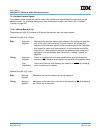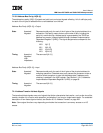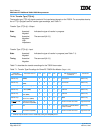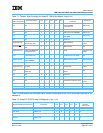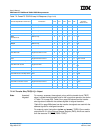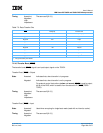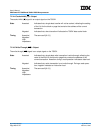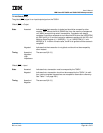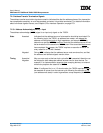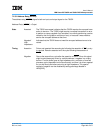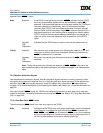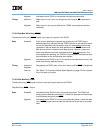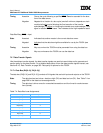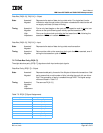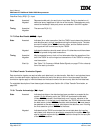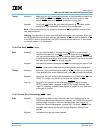
User’s Manual
IBM PowerPC 750GX and 750GL RISC Microprocessor
Signal Descriptions
Page 262 of 377
gx_07.fm.(1.2)
March 27, 2006
7.2.5 Address Transfer Termination Signals
The address transfer termination signals are used to indicate either that the address phase of the transaction
has completed successfully or must be repeated, and when it should be terminated. For detailed information
about how these signals interact, see Chapter 8, Bus Interface Operation, on page 279.
7.2.5.1 Address Acknowledge (AACK
)—Input
The address acknowledge (AACK
) signal is an input-only signal on the 750GX.
State Asserted Indicates that the address tenure of a transaction should be terminated. On
the following cycle, the 750GX, as address-bus master, will release the
address and attribute signals to high impedance, and sample ARTRY
to
determine a qualified ARTRY
condition. Note that the address tenure will not
be terminated until the assertion of AACK
, even if the associated data tenure
has completed. As snooper, the 750GX requires an assertion of AACK
for
every assertion of TS
that it detects.
Negated During ABB
, indicates that the address tenure must remain active, and that
the address and attribute signals remain driven.
Timing Assertion/
Negation
May occur as early as the bus clock cycle after TS
is asserted. Assertion can
be delayed to allow adequate address access time for slow devices. For
example, if an implementation supports slow snooping devices, an external
arbiter can postpone the assertion of AACK
.
Note: If configured for 1x or 1.5x clock modes, the 750GX requires AACK
to
be asserted no sooner than the second cycle following the assertion of TS
(one address wait state) in order to generate a snoop response (via ARTRY
).



